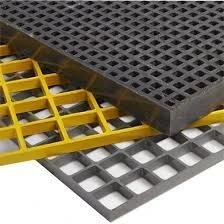loading...
- No. 9, Xingyuan South Street, Dongwaihuan Road, Zaoqiang County, Hengshui, Hebei, China
- admin@zjcomposites.com
- +86 15097380338
- Welcome to visit our website!
frp bridge deck panels
FRP Bridge Deck Panels A Modern Solution for Infrastructure Improvement
In the realm of civil engineering and infrastructure development, the need for durable and lightweight materials has never been more critical. One such innovation is the use of Fiber-Reinforced Polymer (FRP) bridge deck panels. These panels offer an array of benefits over traditional materials, making them a popular choice for modern bridge construction and rehabilitation projects.
What are FRP Bridge Deck Panels?
FRP bridge deck panels are composite materials made from a polymer matrix reinforced with fibers, typically glass or carbon. This composition results in panels that are not only lightweight but also possess excellent strength-to-weight ratios. Unlike traditional concrete or steel, FRP materials are resistant to corrosion, which significantly extends the lifespan of bridge structures.
Advantages of FRP Materials
One of the most significant advantages of FRP deck panels is their reduced weight. Being lightweight means easier handling and installation, which can lead to lower transportation costs and quicker construction timelines. This characteristic is particularly beneficial for bridge rehabilitation projects where temporary support structures may not be feasible.
Moreover, FRP materials exhibit remarkable resistance to environmental factors, including salt, moisture, and ultraviolet rays. This feature contributes to lower maintenance costs over the lifespan of the bridge, an essential consideration for transportation agencies operating under budget constraints.
The low thermal expansion coefficients of FRP panels mean they maintain dimensional stability across temperature variations, reducing the risk of cracking or deformation. Additionally, their non-conductive nature ensures that FRP panels do not pose electrical hazards, further enhancing safety for both workers and travelers.
frp bridge deck panels

Applications of FRP Bridge Deck Panels
FRP deck panels are ideally suited for various bridge types, including pedestrian walkways, vehicular bridges, and railway overpasses. Their lightweight nature allows for creative architectural designs without compromising structural integrity. In urban environments where space is constrained, the versatility of FRP materials enables innovative solutions that traditional construction methods might not permit.
In rehabilitation projects, FRP panels offer a valuable solution for retrofitting aging infrastructures. They can be installed over existing concrete decks, providing a seamless and efficient upgrade without necessitating extensive demolition or reconstruction efforts. This capability allows for minimal disruption to traffic flow, which is crucial in bustling metropolitan areas.
Challenges and Considerations
While FRP bridge deck panels present many advantages, there are also certain challenges to consider. Initial material costs may be higher compared to traditional concrete or steel options. However, when factoring in lifecycle costs, including maintenance and durability, FRP panels often prove to be a more economical choice over time.
Moreover, the design process for FRP structures requires specialized knowledge and expertise, as the behavior of composite materials under load can differ significantly from that of conventional materials. Consequently, engineers must be well-versed in the unique properties and best practices associated with FRP design and installation.
Conclusion
As the demand for sustainable, efficient, and durable infrastructure continues to rise, FRP bridge deck panels stand out as an innovative solution poised to reshape bridge construction and rehabilitation practices. Their notable advantages, including lightweight construction, corrosion resistance, and reduced maintenance, align with modern engineering goals aimed at enhancing the longevity and safety of transportation networks. By embracing advances in material science, infrastructure development can meet contemporary needs while paving the way for a brighter, safer future in civil engineering.
-
GRP Structures: The Future of Lightweight, High-Performance EngineeringNewsJun.20,2025
-
FRP Water Tank: High-Performance Storage for Corrosive and Clean Water SystemsNewsJun.20,2025
-
FRP Square Tube: The New Industry Standard for Chemical and Structural ApplicationsNewsJun.20,2025
-
FRP Pultruded Profiles: The Ultimate Choice for Lightweight Structural StrengthNewsJun.20,2025
-
FRP Handrails: The Safer, Smarter, and Stronger Choice for Modern InfrastructureNewsJun.20,2025
-
FRP Grating: The Smart Solution for Durable, Lightweight Industrial FlooringNewsJun.20,2025
-
Why Choose a Galvanized Water Tank for Your Storage NeedsNewsMay.21,2025
